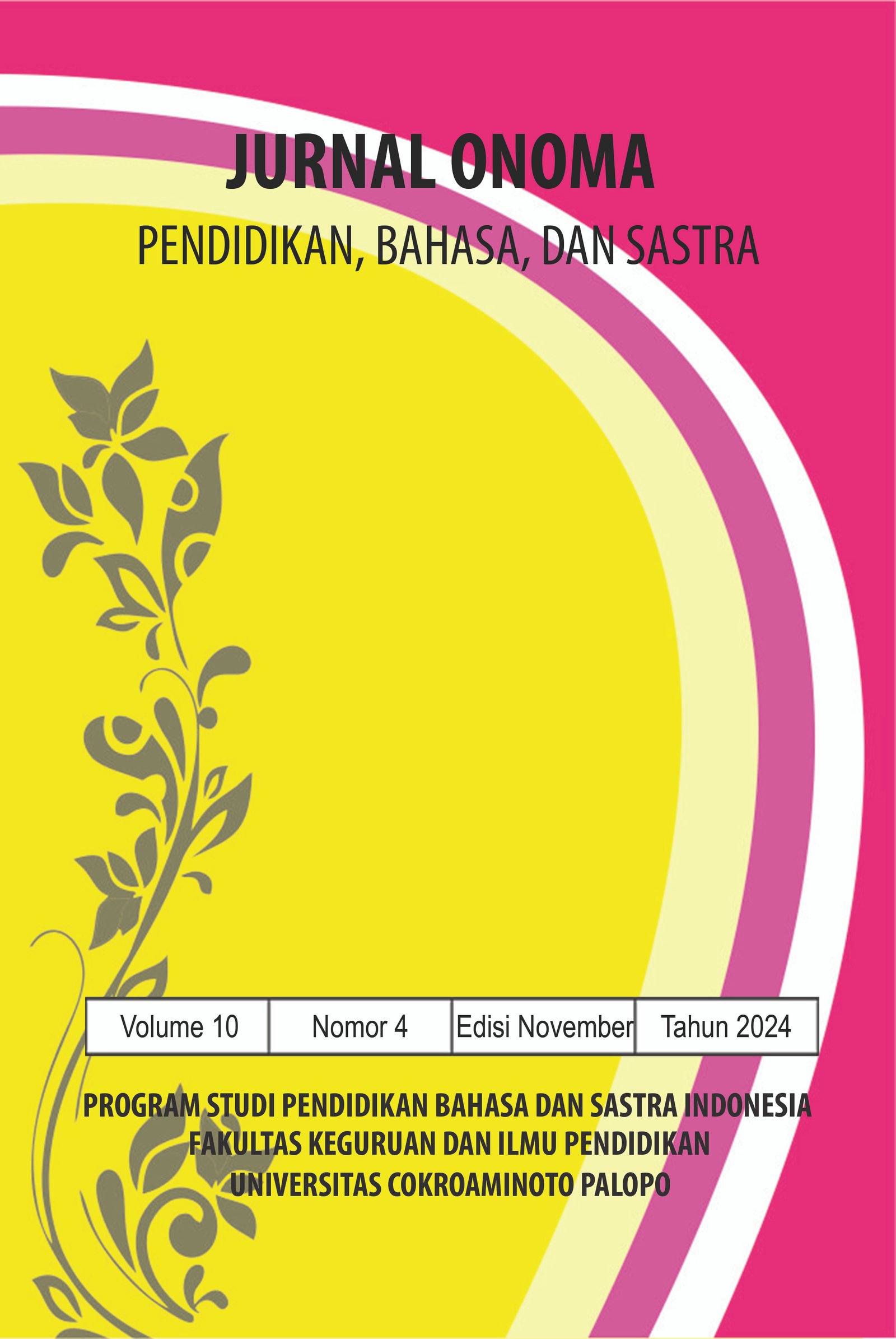Mengenal dan Memahami Karakteristik Peserta Didik dalam Pendidikan Inklusi: Cara Belajar Anak Berkebutuhan Khusus dalam Menulis dan Membaca
https://doi.org/10.30605/onoma.v10i4.4822
Keywords:
mengenal dan memahami, karakteristik peserta didik, anak berkebutuhan khusus, pendidikan inklusiAbstract
Penelitian ini bertujuan untuk meneliti cara belajar anak berkebutuhan khusus, sehingga dari hasil penelitian ini diharapkan dapat memberikan informasi tambahan bagi guru-guru khususnya bagi guru profesional yang telah mengikuti PPG terkait karakteristik peserta didik dalam implementasi pendidikan inklusi di sekolah regular. Penelitian ini menggunakan pendekatan kualitatif dengan desain studi kasus untuk mengenal dan memahami cara belajar anak berkebutuhan khusus. Subjek penelitian adalah 5 anak dengan setiap kebutuhan khusus yang berbeda. Penelitian ini menggunakan teknik purposive sampling dalam memilih partisipan berdasarkan kriteria tertentu, yaitu subjek yang dipilih adalah anak dengan kebutuhan khusus mewakili setiap kategori/jenis Anak Berkebutuhan Khusus (ABK). Penelitian ini dilakukan di SLBN 1 Palopo. Metode pengumpulan data meliputi pengamatan langsung, catatan lapangan, sebagai data primer dan dokumentasi sebagai data pendukung dalam penelitian ini.
Downloads
References
Azizah, N. N, dkk. (2022). Pengantar Pendidikan. CV Media Sains Indonesia.
Moleong, L. J. (2013). Metodologi Penelitian Kualitatif. Remaja Rosda Karya.
Mudjito, Harizal, Elfindri. 2012. Pendidikan Inklusif. Baduose Media.
Nurfadhillah, S. (2021). Analisis Karakteristik Anak Berkebutuhan Khusus (Autisme) di Sekolah Inklusi SDN Cipondoh 3 Kota. Bintang: Jurnal Pendidikan dan Sains, 3 (3), 459-465.
Phytanza, D. T. P, dkk. (2023). Pendidikan Inklusif: Konsep, Implementasi dan Tujuan. CV Rey Media Grafika.
Putri, S. S. (2020). Analisis Kesulitan Belajaran Siswa Berkebutuhan Khusus (Autisme) dalam Pembelajaran Matematika di Kelas Inklusi. Jurnal UIN Jambi.
Rakhmawati, E. M. (2020). Analisis Faktor Pendukung Hasil Pembelajaran Daring pada Anak Berkebutuhan Khusus. Prosiding Unnes.
Soemantri, S. (2007). Psikologi Anak Luar Biasa. Bandung: Reflika Aditama.
Susilahati. (2023). Pendidikan Inklusif. Uwais Inspirasi Indonesia.
Tarigan, J.E. (2022). Pengantar Pendidikan. CV Media Sains Indonesia.
Unesco. (2009). Policy guidelines on inclusion in education.
Yuwono, J. (2021). Buku Saku Penyelenggaraan Pendidikan Inklusif di Sekolah Dasar. Kementerian Pendidikan, Kebudayaan, Riset, dan Teknologi.
Downloads
Published
How to Cite
Issue
Section
License
In submitting the manuscript to the journal, the authors certify that:
- They are authorized by their co-authors to enter into these arrangements.
- The work described has not been formally published before, except in the form of an abstract or as part of a published lecture, review, thesis, or overlay journal.
- That it is not under consideration for publication elsewhere,
- That its publication has been approved by all the author(s) and by the responsible authorities – tacitly or explicitly – of the institutes where the work has been carried out.
- They secure the right to reproduce any material that has already been published or copyrighted elsewhere.
- They agree to the following license and copyright agreement.
License and Copyright Agreement
Authors who publish with Onoma Journal: Education, Languages??, and Literature agree to the following terms:
- Authors retain copyright and grant the journal right of first publication with the work simultaneously licensed under Creative Commons Attribution License (CC BY 4.0) that allows others to share the work with an acknowledgment of the work's authorship and initial publication in this journal.
- Authors are able to enter into separate, additional contractual arrangements for the non-exclusive distribution of the journal's published version of the work (e.g., post it to an institutional repository or publish it in a book), with an acknowledgment of its initial publication in this journal.
- Authors are permitted and encouraged to post their work online (e.g., in institutional repositories or on their website) prior to and during the submission process, as it can lead to productive exchanges, as well as earlier and greater citation of published work.

















